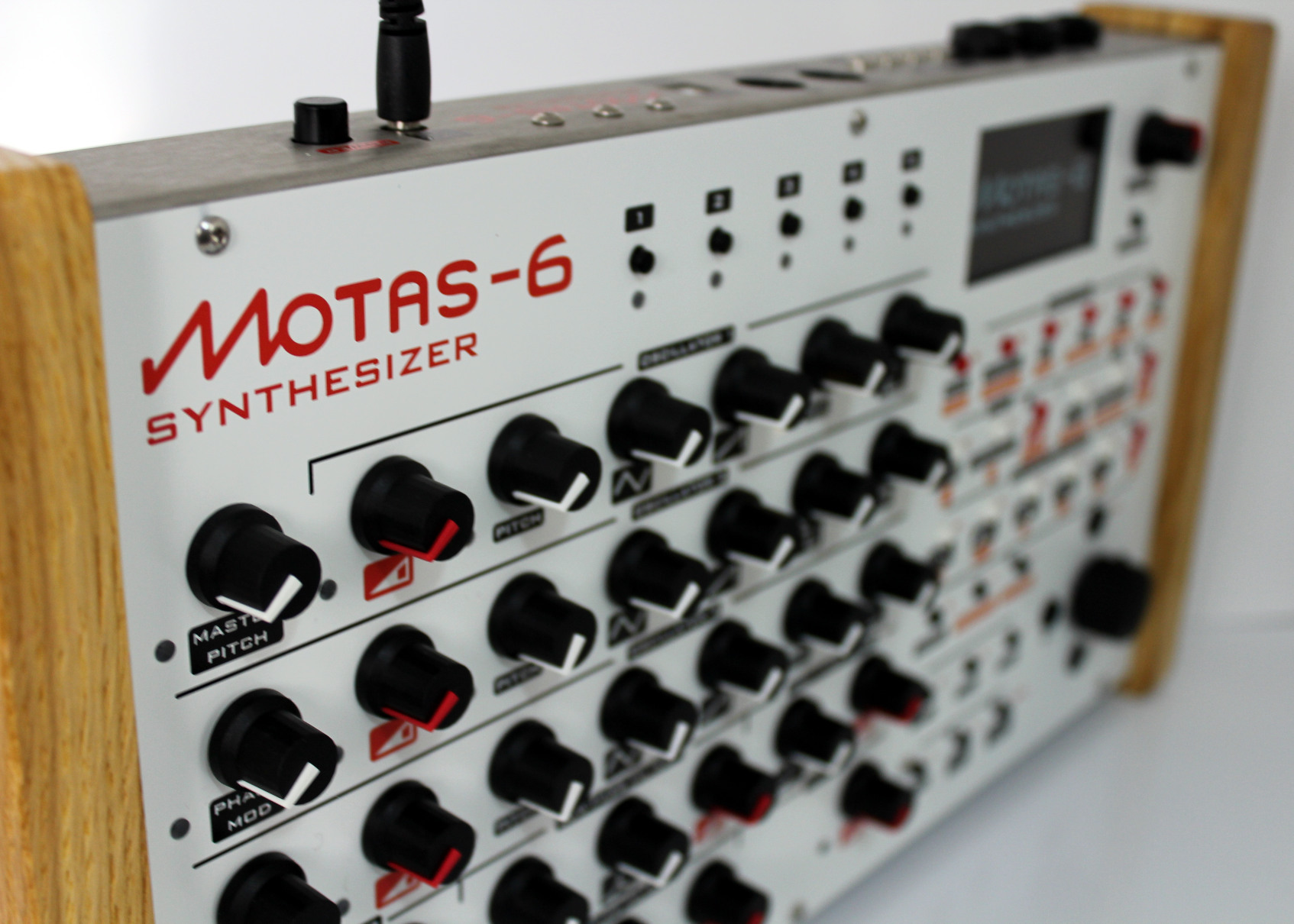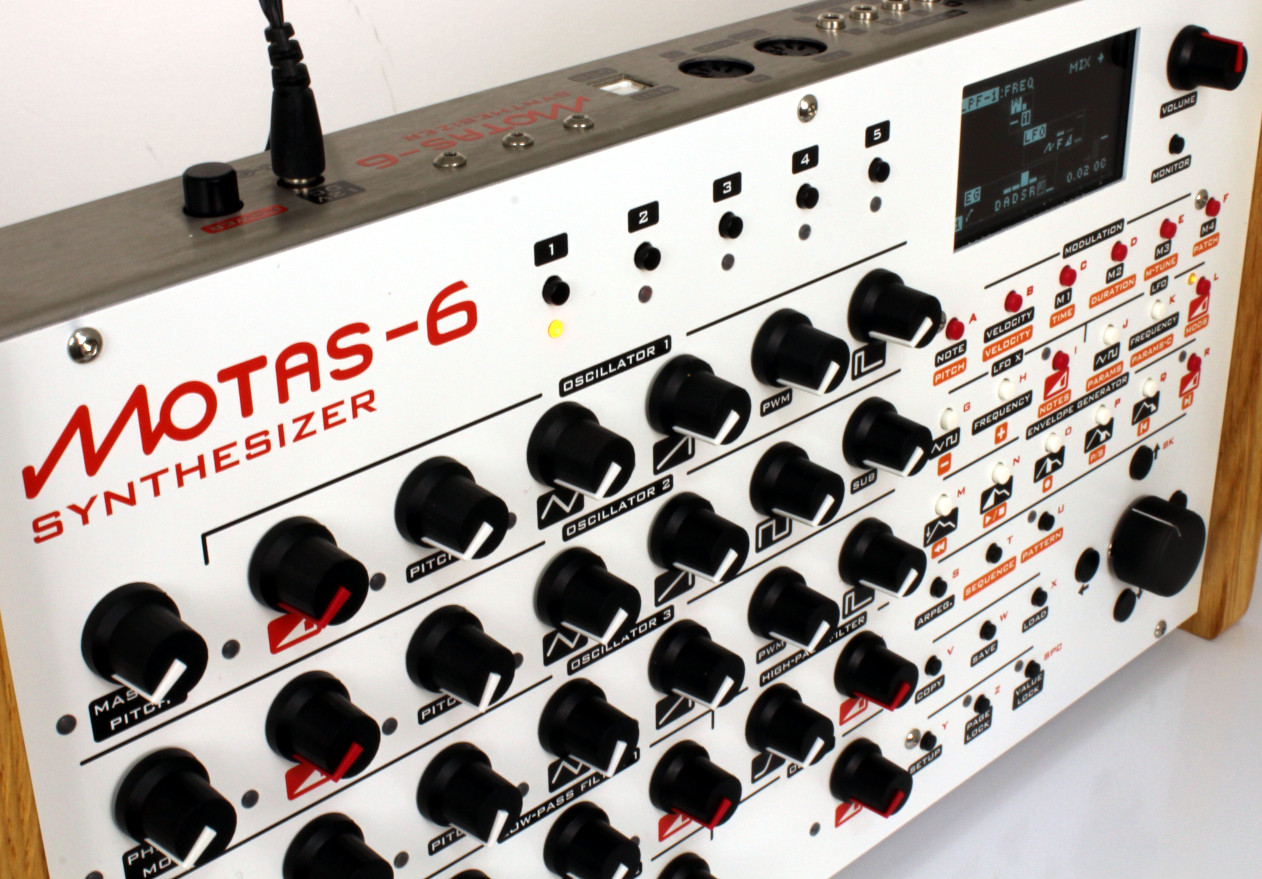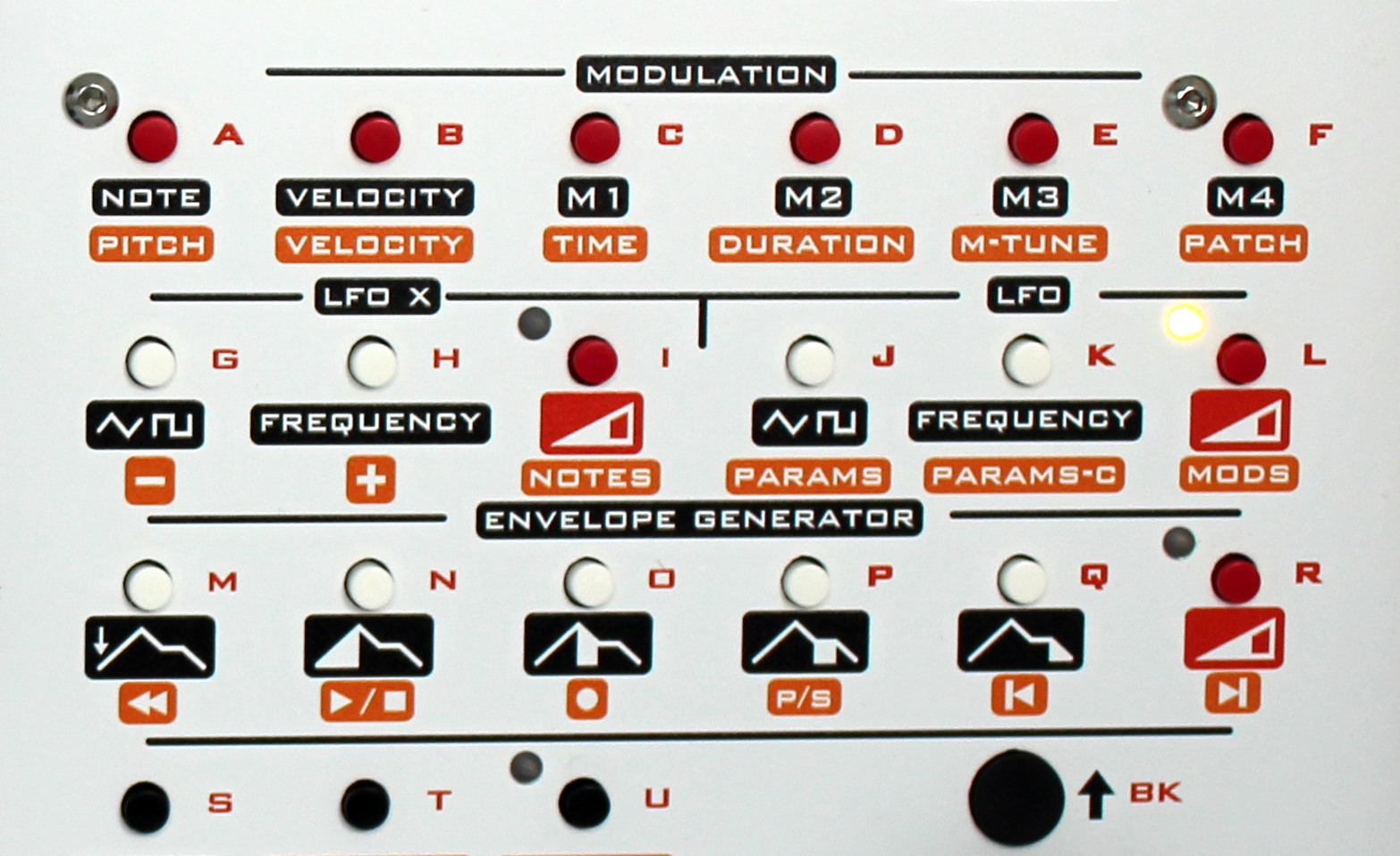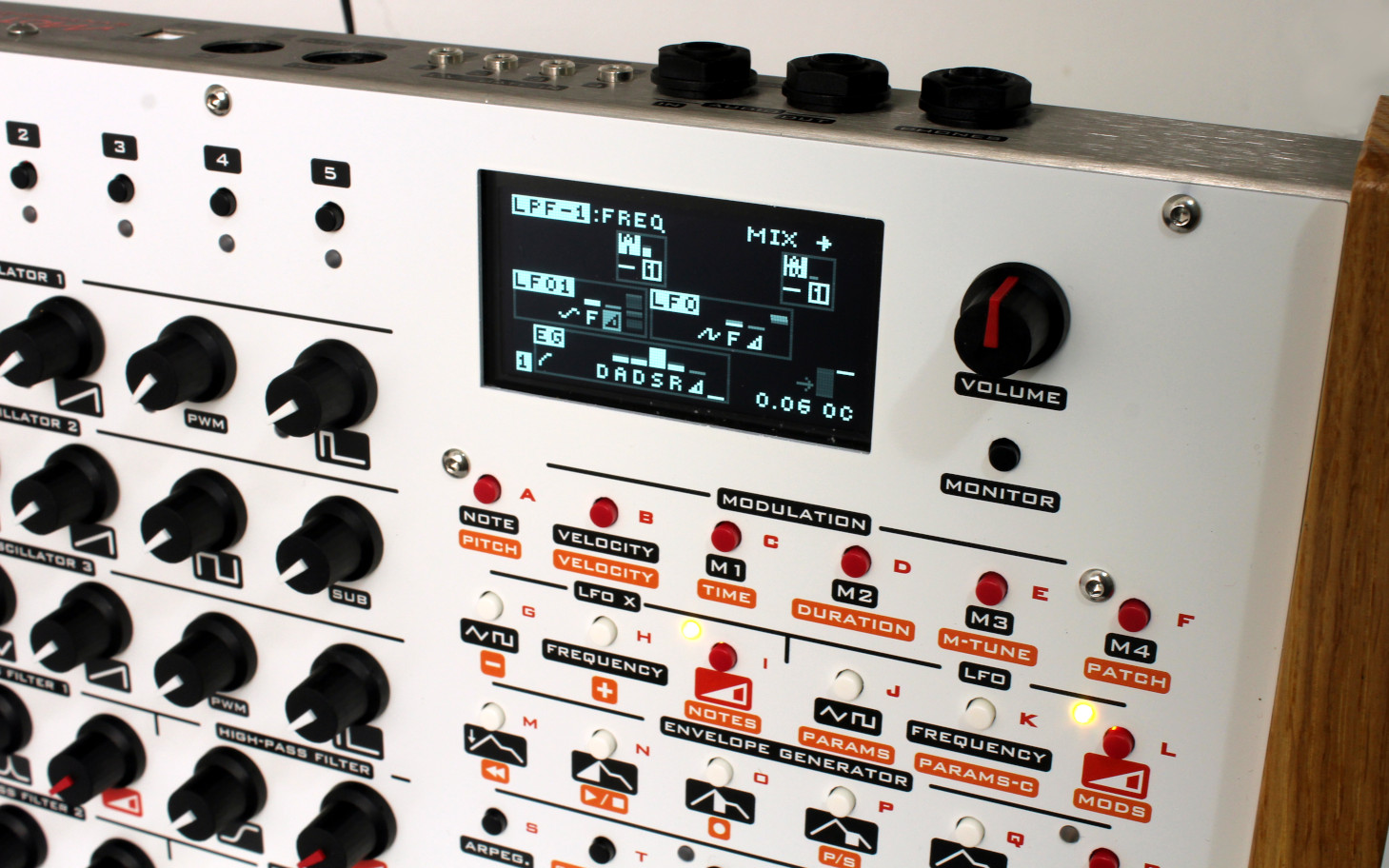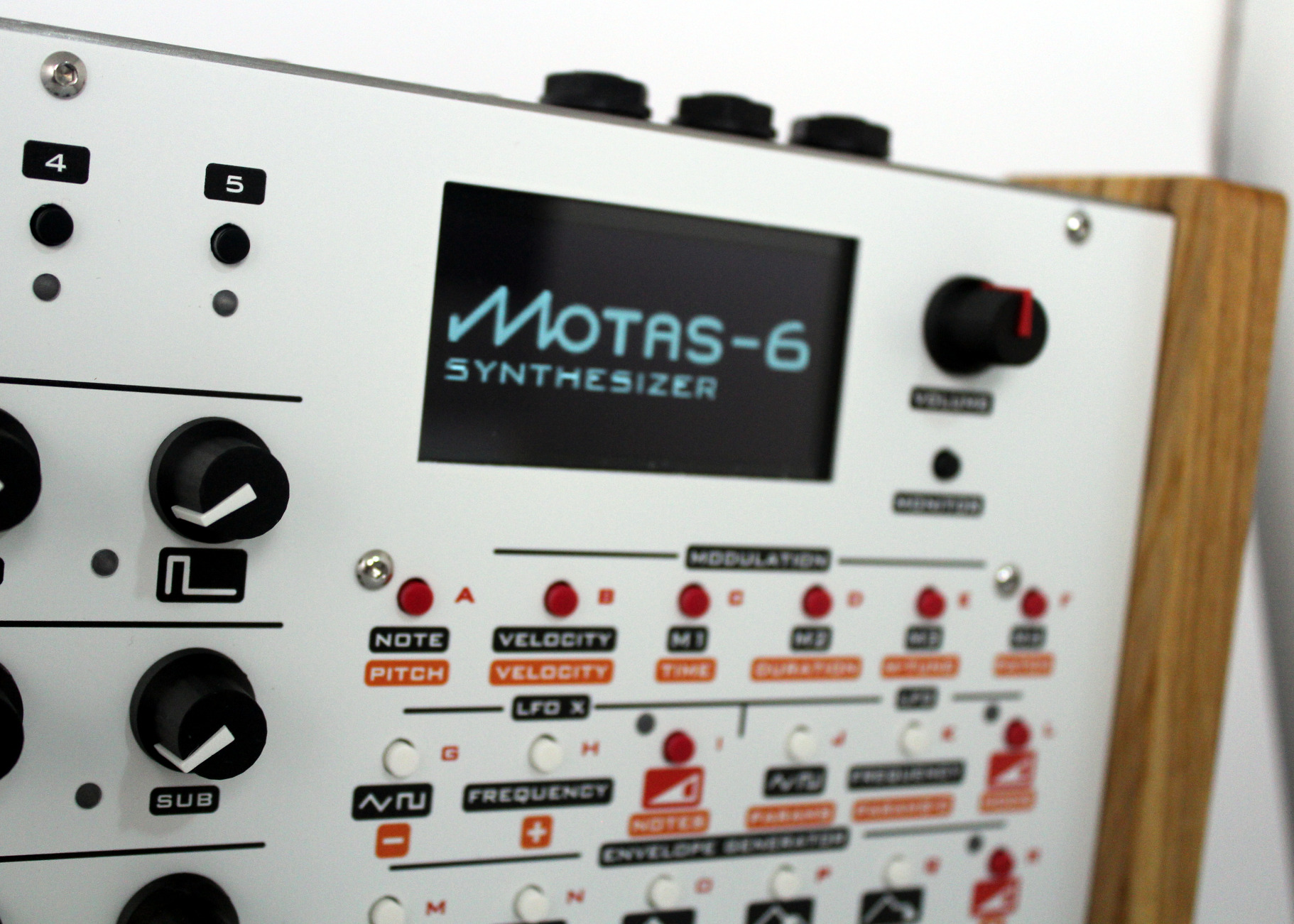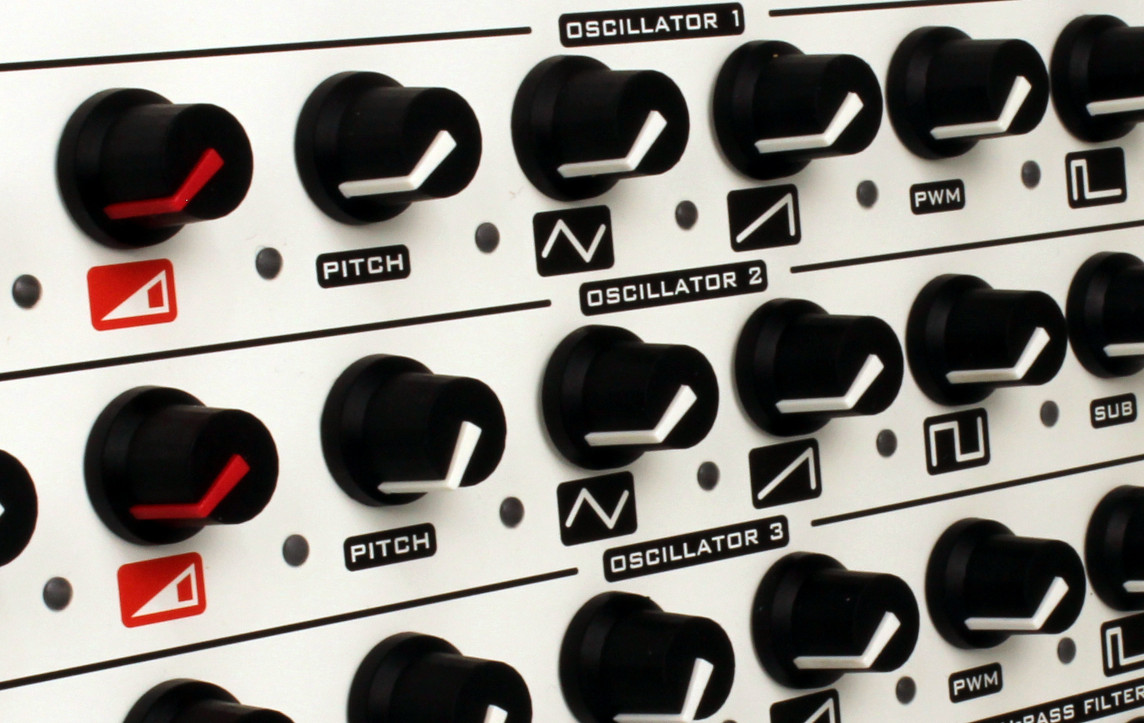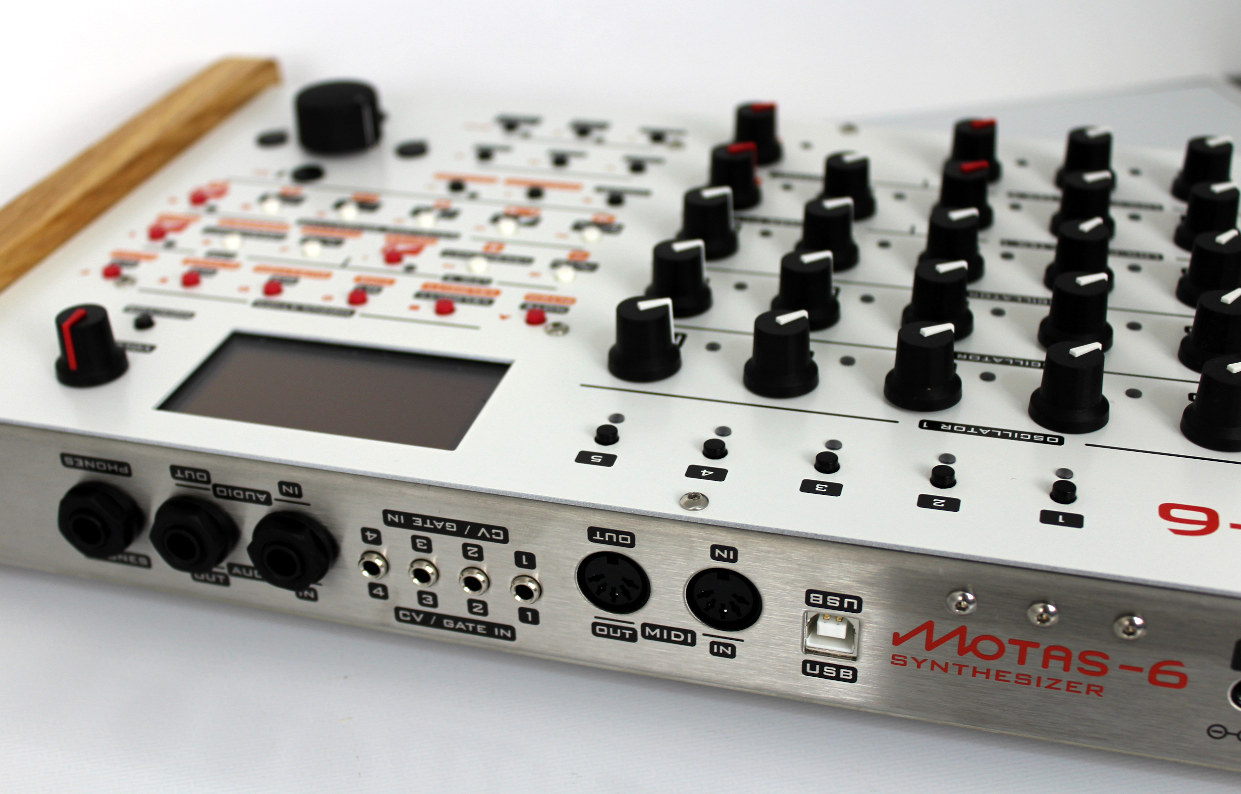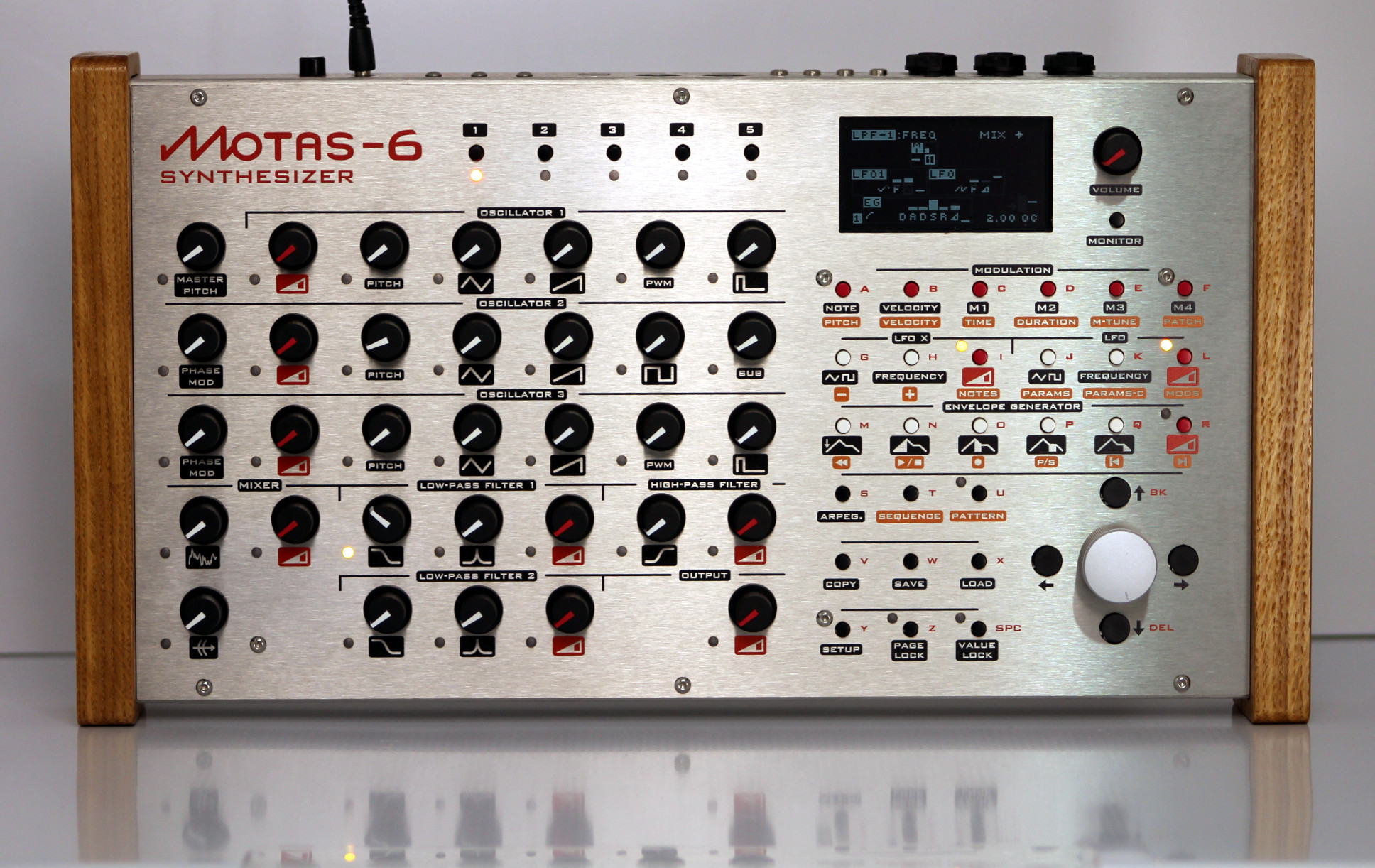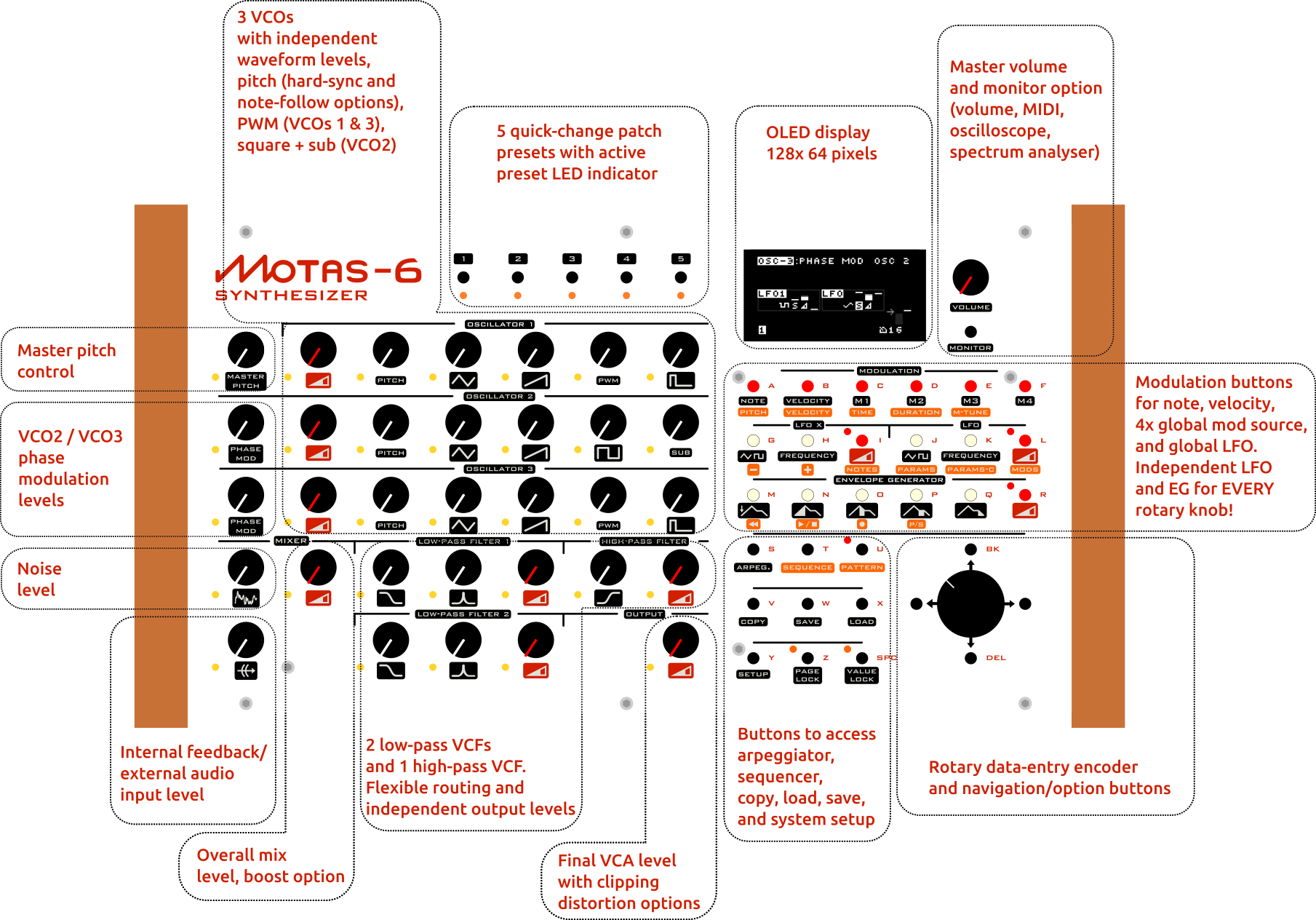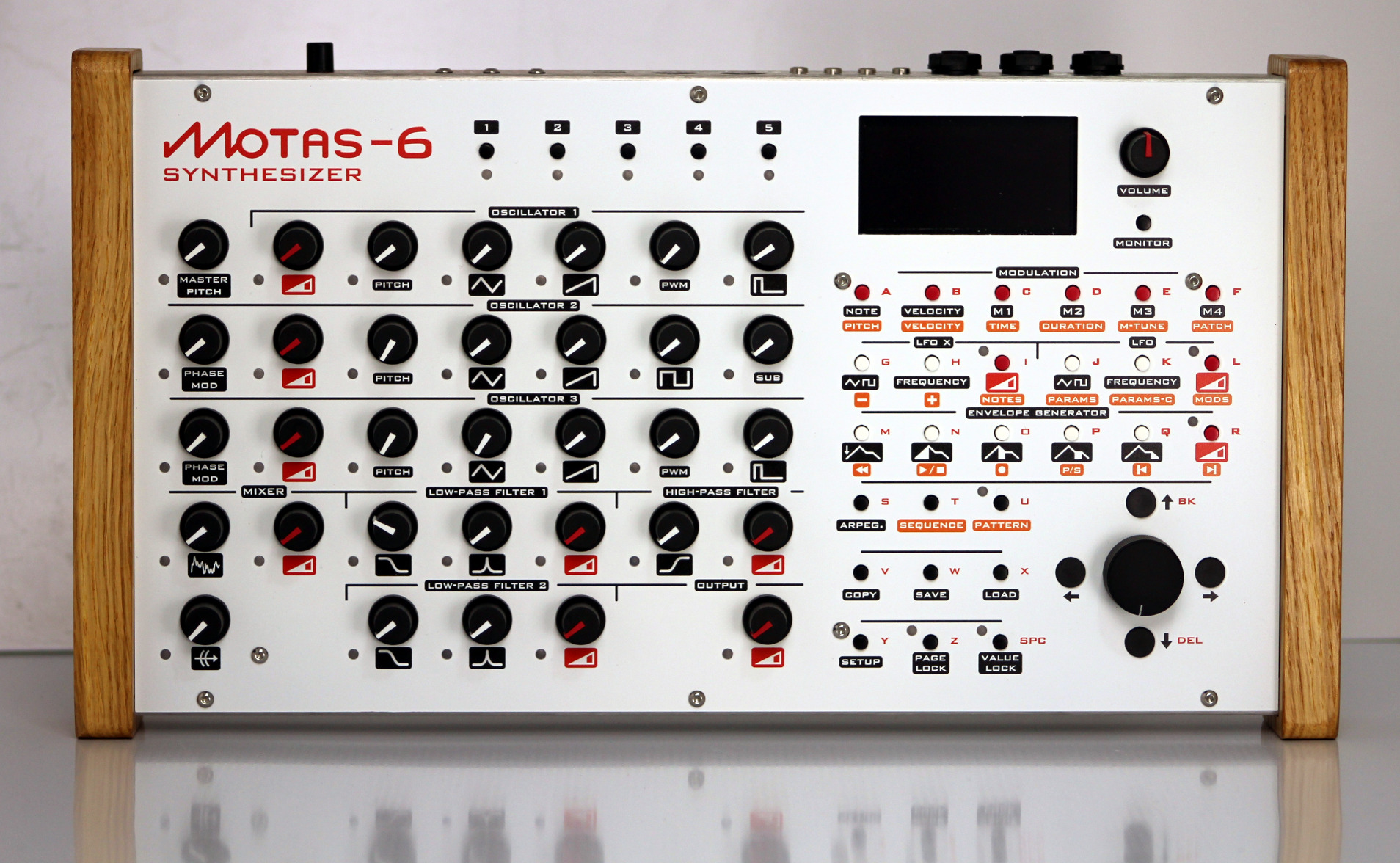Vector morphing
There are 5 instant-access patches available at any time (in
RAM memory). In vector morphing mode dual external controllers
allow the active patch to morph in 2-dimensions between the first 4
presets. On exit from this mode the resulting patch settings are
stored to the 5th preset automatically.
Oscillators
Motas-6 has three voltage-controlled
oscillators (VCOs). The oscillators are analogue VCOs (not DCOs or
NCOs). Each oscillator has independent tracking options (when
multiple notes are played): last note on, 1st note, 2nd note, 3rd
note, highest, middle or lowest. This gives very flexible
paraphonic playing capability.
The pitch of each oscillator depends on its individual pitch
settings in combination with the master pitch parameter control.
Oscillator 1 has separate triangle, sawtooth and pulse
waveform outputs. The pulse-width can be controlled (PWM).
Oscillator 1 can be hard-synced to Oscillator 2 and/or Oscillator
3.
Oscillator 2 has separate triangle, sawtooth, square and
sub-square waveform outputs. Oscillator 2 can be hard-synced to
Oscillator 1 and/or Oscillator 3. The triangle and sawtooth
waveforms of this oscillator can be phase-modulated by the triangle
wave from Oscillator 1.
Oscillator 3 has separate triangle, sawtooth and pulse
waveform outputs. The pulse-width can be controlled (PWM). The
triangle and sawtooth waveforms of this oscillator can be
phase-modulated by the triangle wave from Oscillator 1 or 2.
Mixer
The mixer takes the signals from the 3 oscillators, noise
source and external input and outputs to the filters. The mixer
output will distort (intentionally) with the highest input levels
and there is a boost mode for even greater distortion.
Noise - an analogue noise source with selectable white/pink
response has its own control for input level into the mixer.
External input / feedback - external audio can be routed
into the mixer with its own level control. However, when nothing is
plugged into the external audio input socket an audio feedback loop
from after the final VCA is fed into the mixer instead.
Filters
Motas-6 has very powerful filtering
capabilities. The 3 independent analogue filters can be chained and
outputs mixed to the output VCA for powerful dynamic sound shaping.
For example, combining one of the low-pass filters in series with
the high-pass filter allows a band-pass response output where the
response low and high points can be individually modulated to sweep
in (potentially) complex and interesting ways!
Low-pass filter 1 (LPF-1) is a 6-pole voltage-controlled
low-pass filter (VCF) with adjustable resonance to self-oscillation
(with independent 1, 2, 3, 4, 5 and 6-pole outputs). The input to
LPF-1 can be set to: mixer (default), LPF-2, HPF, noise source,
pulse wave of Oscillator 1, sawtooth of Oscillator 2, triangle wave
of Oscillator 3 or the sub-square from Oscillator 2. Uniquely, the
resonance feedback signal can be taken from 3 different locations
in the audio path for 3 different sound characteristics.
Low-pass filter 2 (LPF-2) is a 4-pole low-pass
voltage-controlled filter with adjustable resonance to
self-oscillation. LPF-2 has a different circuit design and
therefore sound character compared to LPF-1. The input to LPF-2 can
be set to: mixer (default), LPF-1 (pole-1, pole-2, pole-4, pole-5
or pole-6), noise source or HPF.
High-pass filter (HPF) is a 2-pole high-pass
voltage-controlled filter. The input to HPF can be set to: mixer
(default), LPF-1 (pole-1, pole-2, pole-4, pole-5 or pole-6), noise
source or LPF-2.
Output VCA
The output voltage-controlled amplifier (VCA) stage has a
choice of analogue clipping/distortion options: dry, soft clip,
hard clip, soft clip + hard clip, dry + soft clip + hard clip.
